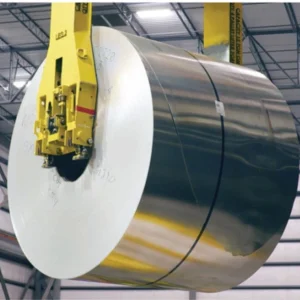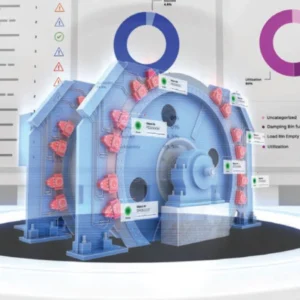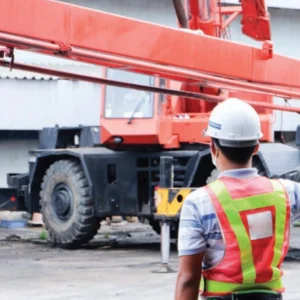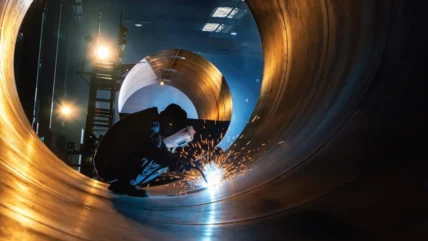
Not only will it be helped by all the new steel production capacity coming online, but as part of their quest to be more competitive and more efficient, US steel companies – largely mills, but also distributors, processors and fabricators – are looking to replace, upgrade or modernise their cranes and other equipment to help them achieve their goals.
Philip Gibbs, a senior equity analyst for KeyBanc Capital Markets, says that the US steel market dynamics continue to be highly volatile and uncertain with steel buyers mainly grappling with what the impact will be from the import tariff psychology and the lack of clarity about domestic steel availability.
“They are reassessing their international options at a time when, at least for the moment, all the rules seem to be up in the air,” Gibbs says, particularly as far as how they relate to Canadian and Mexican tariffs and their potential direct and indirect impact upon the automotive market and other steel-consuming end-use markets such as the construction, heavy equipment and energy sectors.
“This is coming after the US steel market had already experienced a challenging 2024, partly because of the impact that the cumulative Federal Reserve interest rate hikes had upon manufacturing demand in certain steel-consuming end-use markets,” Rich Manson, chief financial officer of Olympic Steel, explains, noting that with lower OEM demand, as well as the ramp-up of additional steelmaking capacity, domestic mill operating rates have been only about 70–75%, down from about 80% when the steel Section 232 tariffs went into effect during Trump’s first term.
Manson adds that the Trump administration believes that it could drive US steelmaking production back up if, through tariffs, he could make foreign steel – including Canadian and Mexican steel – more expensive.
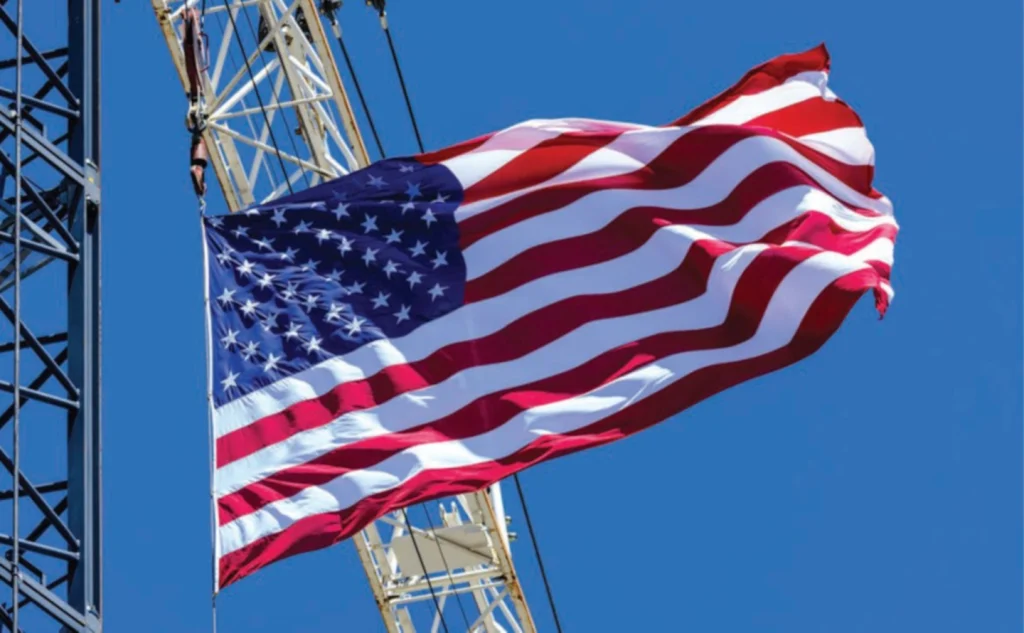
Philip Bell, president of the Steel Manufacturers Association, stated that he believes that the American steel industry – which he has described as being the backbone of the US economy and being critical to the nation’s national, energy and economic security. “This decisive action sends a clear message to the world: the United States will not tolerate unfair trade practices that harm American workers and industries,” Bell says.
Kevin Dempsey, president and chief executive officer of the American Iron and Steel Institute (AISI), also voiced support for “the president’s actions to restore the integrity of the tariffs on steel and to implement a robust and reinvigorated programme to address unfair trade practices”.
“But given the recent volatility and questions about the tariffs and other policies that the Trump administration could enact, it remains somewhat uncertain as to how everything will shake out,” Ronald Piso, sales manager for GW Becker, says.
He notes that, given the recent volatility and questions about the tariffs and other policies that the Trump administration could enact, there could be short-term volatility, but long-term stability and growth, especially given the uncertainty whether some of the funding from certain legislation passed by the Biden administration such as the IIJA infrastructure bill and the Inflation Reduction Act and CHIPS & Science Act that were expected to have a positive impact upon the steel market and the US economy, could be rescinded.
Ryan McKinley, a CRU senior steel analyst notes that while under the Trump administration’s stated policies, and less competition from abroad, domestic steelmakers could be even more profitable – that is assuming that demand continues to chug along. However, he pointed out that if inflation picks up again – which is possible with the tariffs – there is risk that steel demand could decline.
Technological advancements in crane systems
Already two major US indices – the Conference Board’s Consumer Confidence Index and the University of Michigan’s Consumer Sentiment Index – declined sharply in February and could fall further with many US economists stating that it is increasingly possible that the US economy could slip into a recession later this year.
KeyBanc’s Gibbs says that while he wouldn’t characterise any of the major domestic end-use markets as being overly strong and with there being some variations in the various steel consuming sectors, on average US steel demand is fairly steady with some companies expressing optimism that the market will see some improvement, particularly toward the back half of the year.
However, Gibbs says that is yet to determined and is based upon the hope that there is more clarity about business conditions: “The current uncertainty related to the tariffs and other factors are currently creating some anxieties around business planning and domestic consumers’ willingness to commit capital to projects.”
This is also coming at a time when the US steel industry had been already increasing its production capacity and has plans to continue to do so over the next several years, both through new greenfield facilities and expansions of existing steelmaking plants. In fact, SMA’s Bell has estimated that more than 17 million short tonnes of new US steelmaking capacity could come online by 2027.
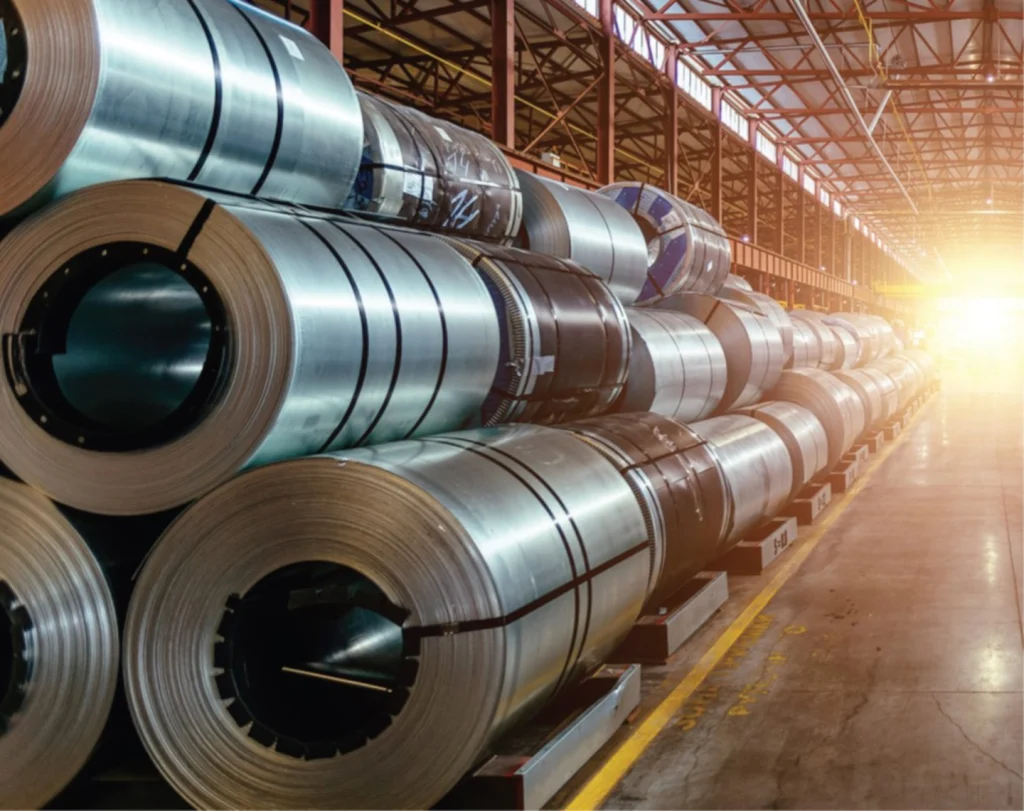
In fact, Daniel Beilfuss, general manager of Columbus McKinnon’s Magnetek brand, says that over the past few years more US greenfield steel mills have come online than have done so over the past 25 years or so. That doesn’t even take into account the brownfield expansions.
This, Jeff McNeil, Gorbel’s vice president of marketing and innovation, observes has come with the pickup – or expected pickup – in manufacturing activity motivating companies to increase their production activity and lower their costs.
Brian Roberts, market development manager for overhead cranes at Conductix-Wampler, adds that it has been at least in part driven by an influx of large infrastructure projects and new automotive plants, as well as a need for steelmakers to produce higher-quality steel more efficiently and sustainably.
Also, mill profitability has been another factor. Gibbs points out that, for a while, they were hurting financially and didn’t have the necessary capital to make many investments but, post-pandemic, when they had two or three of their best years ever, they decided to reinvest in their businesses.
Further, there is a political realm to this beyond what we have been seeing this year with the Trump administration’s policies. Beilfuss notes that previous administrations have also taken action to onshore more production of both steel itself and for steel-containing products, which had the effect of increasing the need for additional US production capacity for steel and other metals.
Overall, Piso says he believes that the US steel industry continues to be quite healthy and it will continue to move in a positive direction: “With the US manufacturing activity growing, US steel companies are also busy and are investing in additional sheet, plate and rebar production capacity and that is also positive for overhead crane demand.” In fact, Beilfuss observed that some recently built US greenfield mills and mill expansions have added as many as 30–40 new cranes at a single facility.
Outlook for steel and crane demand
While some recently added steelmaking capacity is ramping up, such as that at Steel Dynamics’ greenfield Sinton, TX, mill, Nucor’s Brandenburg, KY, greenfield plate mill, the Nucor Gallatin expansion in Ghent, KY, and Commercial Metals’ Mesa, AZ, rebar mill, Gibbs says that the biggest increase in new steelmaking capacity in 2025 will be coming from US Steel’s Big River 2 mill in Osceola, AR.
Piso says that it could be a big catalyst for the steel industry should the proposed partnership of US Steel with Nippon Steel go through, as it is expected that Nippon Steel could modernise a lot of US Steel’s operations.
He also notes that, in addition to the steelmaking capacity increases by conventional steelmakers, South Korea’s Hyundai Steel, a unit of automaker Hyundai Motor Group, is considering building a steel sheet mill in Louisiana.
Piso reveals that, in general, steel companies have been signing more purchase orders for cranes and hoists. “Instead of just mulling it over, they are forging ahead with crane purchases,” he says. He adds that the purchases spread across the whole gamut of products, including both new cranes and crane upgrades.
But Piso also adds that there are also other reasons that crane builders are seeing increased steelrelated demand than just additions to steel capacity, including the desire of steel companies to replace or upgrade existing cranes, in some cases with fully or semiautomated cranes. “A lot of steel mills that have old cranes are realising that it is time to upgrade them, whether that means adding a trolley or other features or replacing the entire crane,” he explains.
In fact, ConductixWampler’s Roberts says that he expects to see a stronger focus by steel companies on retrofits and upgrades to existing crane infrastructure rather than widespread investment in new systems. Gorbel’s McNeil says this is coming as some “production critical” companies are looking for more technologically advanced cranes with such capabilities as data collection, troubleshooting and predictive maintenance to make sure that the equipment uptime, and, therefore, steel production uptime, is maximised.
McNeil adds that the labour issues affecting all industries, including the steel industry, are pushing companies to buy cranes and other equipment that enhance productivity which enables them to do what they do safely with fewer people. “This is not unique to the steel industry,” he points out, “But something that is occurring throughout the manufacturing sector.”
Beilfuss says that with the tools and technologies available today, including more analytics, it is very beneficial to steel companies who are looking to increase their capacity and production capabilities.
“Automation is really in the forefront,” Piso states, including the varying levels of automation. He notes that, as far as fullyautomated cranes were concerned, it was a few larger steel companies that had been leading the charge, but more recently some smaller companies, including some processors and fabricators, are also going in that direction.
He says that there is greater realisation of the advantages that automated cranes could bring, including better efficiencies, safety and returns on investment, as well as labour considerations. He admits that the cranes that steelmakers buy aren’t the endall of how they are achieving these goals, and that companies are also buying other technologically sound equipment, but he adds that buying automated cranes definitely helps.
Beilfuss says that many steel companies are also looking for cranes that have preprogrammed restricted area controls for nofly zones – cranes that are preprogrammed to avoid certain obstacles or pieces of machinery automatically as it moves down the runway. “That way, even if the operator isn’t paying careful attention, the crane automatically stops before it runs into something.”
He says that steel companies are also interested in buying cranes that have antisway capabilities – technologies that allow the crane to safely come to a stop without swaying its load. Beilfuss explains that a pendulum sway of a load could either cause harm to a piece of machinery or hurt workers. “By eliminating such sway, it makes the crane safer and more efficient and, therefore, making the mill’s steel production more efficient,” as, if there is an accident, steel production would have to stop.
“Every minute the crane is down, the company is losing money,” Beilfuss points out. “So, by using safety features and automated technology, it helps to prevent downtime and to increase the steel company’s profitability.”
ConductixWampler’s Roberts agrees, stating that the US steel industry is increasingly embracing such things as full and partial automation, incorporating conductor rails, radio remote controls and data transmission systems, realising that such facility upgrades an easy way for them to boost efficiency, decrease downtime and to ensure worker safety.
“It is important for steel producers and processors to partner with an equipment vendor who understands the use case for their cranes and how they are integrated into their facility’s processes in order to give them guidance about the right equipment or automation upgrades,” Roberts says.
Beilfuss agrees, stating that, while that is not always the case given how heavily worked cranes tend to be in steel mills and that they can only continue to operate for so long, often they can modernise their cranes, bringing them to today’s desired technological level without having to replace the entire crane.
That is because a lot that fails or is outdated tends to be the control systems and other technologies that are part of the crane and often companies can update those technologies without replacing the entire crane. Beilfuss says they can do that by removing the existing controls, motors and brakes and replacing them with new equipment, including new adjustable frequency drives.
“When you look at the overall picture the health of the US steel industry, and of manufacturing in general, it will keep on getter better regardless of the administration and what policies will be enacted,” Piso says, adding, “Since manufacturing activity is strong, companies are willing to keep investing.”
But given the current level of uncertainty and the tendency for people to hold off making decisions until they have a clearer picture of what the future holds, McNeil says he can’t say with any confidence what this will mean as far as steel companies’ crane purchases go, especially given that the tariffs are likely to raise steel prices and, given that steel is their biggest cost element, crane prices are expected to move upwards as well.
On the other hand, Beilfuss says that given that the tariffs are likely to increase the onshoring of the production of both steel and steel containing products, he believes that will at least eventually result in further investments by US steel companies – both in their industry and in the cranes that they use to produce that steel.
As for those cranes, Piso says that the core cranes available now will continue to be the core cranes that steelmakers use for now, but going forward steel companies will be looking for cranes that either have certain currently available technologies or new technologies that crane builders may or may not know about yet.
“Cranes are engineered products that will be advanced by what the next technology, software or automation becomes available,” he says. “But, at the end of the day, steel companies will continue to look for cranes to lift their products and move them from point A to point B.”



